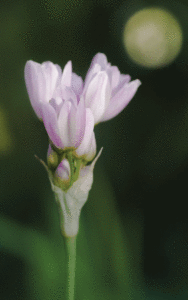Spring planting season, with longer, warmer, brighter days, is when gardeners traditionally celebrate the resurgence of the sun. 
But some growers are also inclined to embrace the night sky and the moon, whose cyclical phases, they believe, can help them produce bigger, better crops.
Google the term “moon phase gardening” and results will run the gamut from venerable publications like the Old Farmer’s Almanac to an array of spiritual new age enthusiasts and off the grid homesteaders.
Despite a diversity of backgrounds, they share an almost fervent belief that the moon’s alchemy makes a huge difference in the quality of crop production.
Many who work the soil learned early on the lore of planting by the moon from family elders handing down their knowledge through generations.
But each season, it seems, new disciples are discovering the wisdom of the ‘old ways’ when they choose to practice more natural methods of organic and biodiversity gardening.
For others, who remain totally in the dark, the venerable Old Farmer’s Almanac’s 2019 edition dispels the notion that moon phase gardening has anything to do with sowing seeds at midnight. Neither is it astrology, the Almanac states, though some ‘true believers’ have connected the dots to include the implications of star signs and beyond.
Dorchester County Master Gardener Laetitia Sands does not claim to be an expert, though she’s explored lunar gardening premises (and promises!), reaching the following summation:
“Reduced to its simplest form, the theory says one should sow plants that bear above the ground, like lettuce, broccoli, spinach and the seeds of flowers and herbs, during the period between the new moon and when it is full, known as the “waxing moon.” During the part of the month when the moon is full to when it fades from sight altogether, called the ‘waning moon,’ you should plant root crops, such as beets, potatoes and radishes.”
The Old Farmer’s Almanac’s website agreed, adding that “the Moon also impacts plant growth through geotropism — which is how plants grow in response to gravity.
Roots grow downward in the direction of gravitational pull and stems grow in the opposite direction (i.e., upwards).”
The Almanac also suggests that increased moonlight during the moon’s waxing period can stimulate stem and leaf growth, while the decreased moonlight during the waning phases will result in greater root development below ground.
Another basic pillar of moon gardening mojo involves the effect of the Moon’s gravitational pull on soil moisture and seed germination, a phenomenon described by Texas Gardener Magazine contributing editor William Scheick as “plant tides.”
“Just as the moon influences sea tides, it presumably also affects the ‘tidal’ motion of water in plants and soil. The ebb and flow of this water, lunar gardeners believe, have an impact on seed germination, floral development and fruit production,” Scheick noted. Lunar gardeners believe that moisture in the ground becomes most available to plants during a full moon, he added.
For full effect, the main waxing and waning stages are further subdivided into two seven-day, quarter-moon segments, Scheick stated. The first seven days of the waxing phase are believed optimal to plant veggies producing “above ground fruit with exposed seeds, such as asparagus, mustard, bok choy, kale, cabbage, broccoli, and cauliflower.” The next week of the waxing cycle is considered best to start crops producing above-ground fruit with enclosed seeds — tomatoes, okra, peppers and melons, he added.
The first week of the waning moon, when light recedes, is perfect for planting bulbs, perennials, and underground vegetables such as radishes, carrots, and garlic.
The second week — the fourth quarter — can be reserved for maintenance chores such as insect control, pruning, watering and harvesting, Scheick noted.
In a 2011 article in the Cambridge, Md. newspaper The Banner Sands pondered how to answer the question posed by a reader regarding planting by the moon, “Is there anything to this, or is it just an old superstition?”
Noting that the practice had been prevalent as recently as during our grandparents and great grandparents’ generation, she alluded to the lack of conclusive scientific evidence to support it.
She did encounter a non-documented German study citing a 50 to 60 percent increase in production from crops planted during a Full Moon cycle, as opposed to others planted during a New Moon phase.
Rather than decry the lack of information about who had performed the study and when, Sands instead was intrigued by the possibilities, admitting that “it might be fun to plant a little of the same flower or vegetable during two different moon phases, just to see what happens.”




